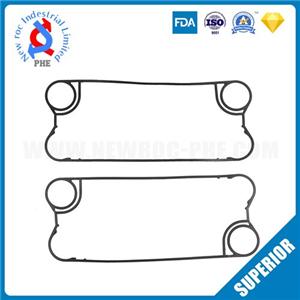The method of changing the resistance of the plate heat exchanger
The plate heat exchanger is a kind of heat exchange equipment that is frequently used now. The resistance of the heat exchange equipment will seriously affect the efficiency of the heat exchange equipment during the use of the heat exchange equipment. Therefore, in order to facilitate everyone's use and operation, the next change will be The method of equipment resistance is introduced.
1. Set the bypass pipe of the plate heat exchanger
When the flow of cold and heat medium is relatively large, a bypass pipe can be set between the inlet and outlet of the plate heat exchanger on the side of the large flow to reduce the flow into the heat exchanger and reduce the resistance.
In order to facilitate adjustment, a regulating valve should be installed on the bypass pipe. This method should adopt a countercurrent arrangement to make the temperature of the cold medium exiting the plate heat exchanger higher, and to ensure that the temperature of the cold medium after the confluence of the medium at the outlet of the heat exchanger can meet the design requirements.
The advantage of setting the bypass pipe of the plate heat exchanger is to ensure that the heat exchanger has a higher heat transfer coefficient and reduce the resistance of the heat exchanger, but the disadvantages are slightly complicated to adjust.
2. Adopt heat mixing heat exchanger plates
The geometrical structure of the corrugation on both sides of the heat mixing heat exchanger plate is the same, and the plates are divided into High Theta and Low Theta according to the angle of the corrugation.
3. Adopt multi-process combined plate heat exchanger
The plate heat exchanger is arranged in a combination of multiple processes, and more process plate heat exchangers are used on the side of the small flow to increase the flow rate and obtain a higher heat transfer coefficient. On the large flow side, fewer processes are used to reduce the resistance of the heat exchanger. Mixed flow patterns appear in the combination of multiple processes, and the average heat transfer temperature difference is slightly lower. The disadvantage of using multi-process combination is that both the fixed end plate and the movable end plate of the heat exchanger are taken over, which requires a lot of work during maintenance.
4. Adopt asymmetrical heat exchanger
The symmetrical heat exchanger is composed of heat exchanger plates with the same corrugated geometry on both sides of the plates, forming a plate heat exchanger with equal cross-sectional areas of the cold and hot runners.
According to the heat transfer characteristics and pressure drop requirements of the cold and hot fluids, the asymmetric plate heat exchanger changes the wave geometry on both sides of the heat exchanger plates to form a plate heat exchanger with different cross-sectional areas of the cold and hot runners, and wide runners. The corner hole on one side has a larger diameter.
The heat transfer coefficient of the asymmetrical plate heat exchanger decreases slightly, and the pressure drop is greatly reduced.
When the flow of cold and heating medium is relatively large, the use of an asymmetric single-process plate heat exchanger can reduce the plate area by 15% to 30% compared to a symmetrical single-process plate heat exchanger.
The above is the method to change the resistance of the plate heat exchanger, each method has corresponding processing characteristics, so users can operate according to their actual conditions when changing the resistance.




